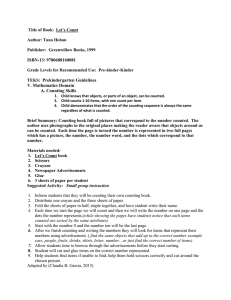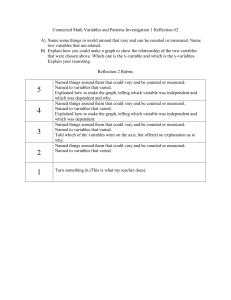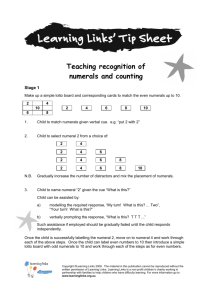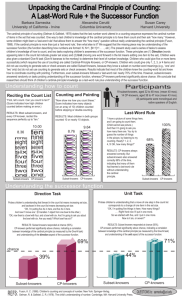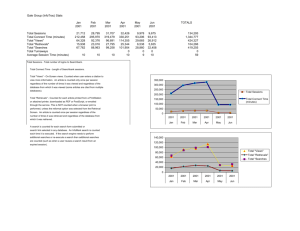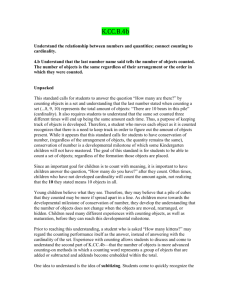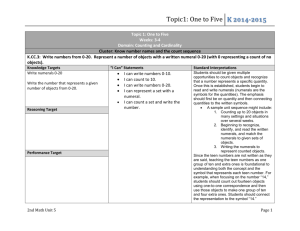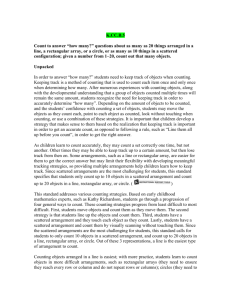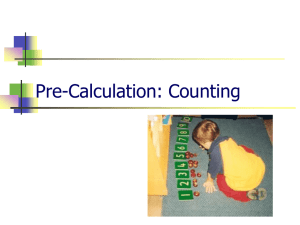Gelman and Gallistel Countine Principles
advertisement
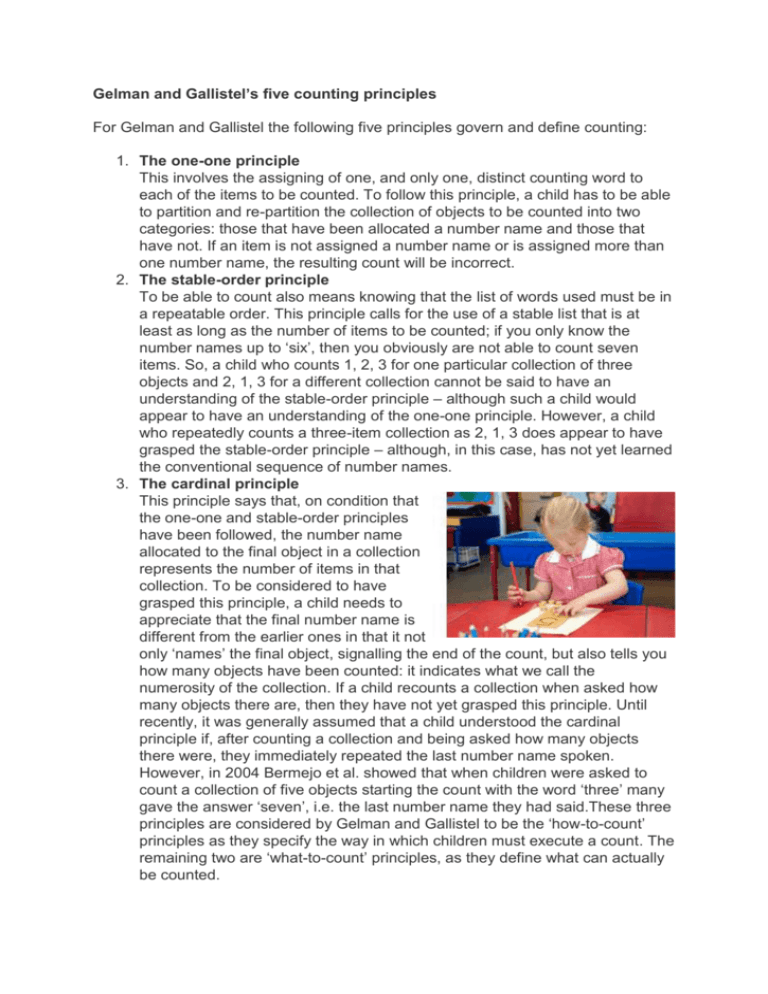
Gelman and Gallistel’s five counting principles For Gelman and Gallistel the following five principles govern and define counting: 1. The one-one principle This involves the assigning of one, and only one, distinct counting word to each of the items to be counted. To follow this principle, a child has to be able to partition and re-partition the collection of objects to be counted into two categories: those that have been allocated a number name and those that have not. If an item is not assigned a number name or is assigned more than one number name, the resulting count will be incorrect. 2. The stable-order principle To be able to count also means knowing that the list of words used must be in a repeatable order. This principle calls for the use of a stable list that is at least as long as the number of items to be counted; if you only know the number names up to ‘six’, then you obviously are not able to count seven items. So, a child who counts 1, 2, 3 for one particular collection of three objects and 2, 1, 3 for a different collection cannot be said to have an understanding of the stable-order principle – although such a child would appear to have an understanding of the one-one principle. However, a child who repeatedly counts a three-item collection as 2, 1, 3 does appear to have grasped the stable-order principle – although, in this case, has not yet learned the conventional sequence of number names. 3. The cardinal principle This principle says that, on condition that the one-one and stable-order principles have been followed, the number name allocated to the final object in a collection represents the number of items in that collection. To be considered to have grasped this principle, a child needs to appreciate that the final number name is different from the earlier ones in that it not only ‘names’ the final object, signalling the end of the count, but also tells you how many objects have been counted: it indicates what we call the numerosity of the collection. If a child recounts a collection when asked how many objects there are, then they have not yet grasped this principle. Until recently, it was generally assumed that a child understood the cardinal principle if, after counting a collection and being asked how many objects there were, they immediately repeated the last number name spoken. However, in 2004 Bermejo et al. showed that when children were asked to count a collection of five objects starting the count with the word ‘three’ many gave the answer ‘seven’, i.e. the last number name they had said.These three principles are considered by Gelman and Gallistel to be the ‘how-to-count’ principles as they specify the way in which children must execute a count. The remaining two are ‘what-to-count’ principles, as they define what can actually be counted. 4. The abstraction principle This states that the preceding principles can be applied to any collection of objects, whether tangible or not. Obviously, for young children learning to count it is easier if the objects are tangible and, where possible, moveable, in order to help them to distinguish the ‘already counted’ from the ‘yet to be counted’ group. To understand this principle, children need to appreciate that they can count non-physical things such as sounds, imaginary objects or even the counting words – as is the case when ‘counting on’. 5. The order-irrelevance principle This principle refers to the knowledge that the order in which items are counted is irrelevant. It does not really matter whether the counting procedure is carried out from left to right, from right to left or from somewhere else, so long as every item in the collection is counted once and only once.
